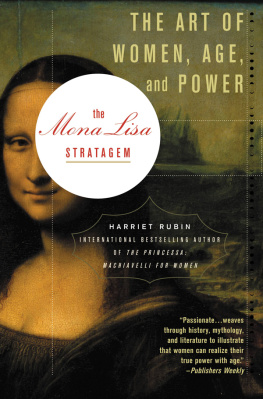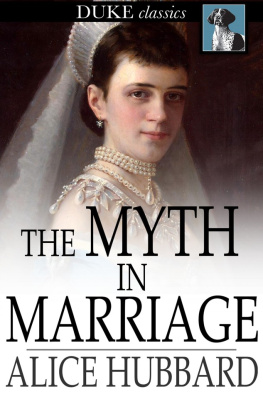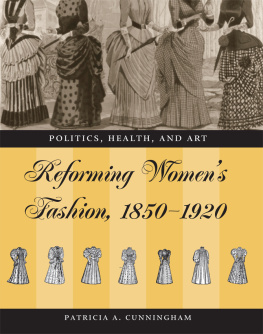Praise for Dispensing Beauty in New York and Beyond
Annette Blaugrund fuses fans enthusiasm, a scholars resourcefulness and a storytellers craft in this engaging, enlightening biography. Praised for her gentle manners and sympathy for the suffering and hardships of others, Harriet Hubbard Ayer emerges from Dr. Blaugrunds portrait as an innovative entrepreneur, crack reporter, and pioneer of the American feminist movement.
Sidney Offit, author, teacher, curator emeritus of the George Polk Journalism Award of the Authors Guild
Just when we thought there were no more original American characters, along comes Annette Blaugrunds fine biography of the little-known feminist pioneer Harriet Hubbard Ayerher harrowing struggles, her inspiring achievements, her unexpected triumphs. What a marvelous tale written in a riveting manner!
William A. Johnson, professor emeritus of philosophy, Brandeis University
An excellently researched mixture of history and biography about a maverick Victorian woman who made beauty her business and thereby changed the way women perceived themselves. Harriet Hubbard Ayer prevailed in a mans world, but what a high price she paid!
Barbara Goldsmith, author of Other Powers: The Age of Suffrage, Spiritualism and the Scandalous Victoria Woodhull and Obsessive Genius: The Inner World of Marie Curie
Published by The History Press
Charleston, SC 29403
www.historypress.net
Copyright 2011 by Annette Blaugrund
All rights reserved
Front cover: William Merritt Chase (18491916), Portrait of a Lady (Harriet Hubbard Ayer),
1880 [detail]. Oil on canvas, 27 1/4 by 22 1/4 inches. California Palace of the Legion of Honor,
Fine Arts Museums of San Francisco. Gift of Henry K.S. Williams.
First published 2011
e-book edition 2011
ISBN 978.1.61423.093.9
Blaugrund, Annette.
Dispensing beauty in New York and beyond : the triumphs and tragedies of Harriet
Hubbard Ayer (1849/1903) / Annette Blaugrund.
p. cm.
Includes bibliographical references.
print edition ISBN 978-1-60949-279-3
1. Ayer, Harriet Hubbard, 1849-1903. 2. Cosmetics industry--United States--History. 3. Businesswomen--United States--Biography. I. Title.
HD9970.5C672A933 2011
338.7'66855092--dc22
[B]
2011008136
Notice: The information in this book is true and complete to the best of our knowledge. It is
offered without guarantee on the part of the author or The History Press. The author and
The History Press disclaim all liability in connection with the use of this book.
All rights reserved. No part of this book may be reproduced or transmitted in any form
whatsoever without prior written permission from the publisher except in the case of brief
quotations embodied in critical articles and reviews.
Contents
Preface
Memory is a complicated thing, a relative of truth, but not its twin.
Barbara Kingsolver, Animal Dreams (1990)
As an art historian, I came upon Harriet Hubbard Ayer through a portrait. She was painted three times by two well-known American artists. I then read The Three Lives of Harriet Hubbard Ayer, an undocumented biography written in 1957 by her daughter Margaret Hubbard Ayer (Cobb), with the help of Isabella Taves, a professional writer. Margarets aim, late in her life, was to nullify misinformation about her mother (namely that she was insane), to make sure that her mother would be remembered and perhaps to assuage her own guilt for having denounced her publicly in the past. While Harriets daughter had access to letters that are no longer extant, I have discovered newspaper articles, court records and other data that tell a more complete story and contradict many of the dates and facts in Margarets imaginative reordering of the material. Margarets son, Hubbard Cobb, in notes for an unpublished book of his own, wrote: Mother told me lots about her early life but I was never sure of what was fact and what was fiction. She had, after all, been on the stage and like most theatre people enjoyed telling a good story even if it was not always accurate. Anyway there is no body around now that can say it wasnt.
Although the 1957 book preserved much of what is known about Harriet and has served as the basis for many biographical dictionary entries and articles, I decided her life deserved a more comprehensive biography. By the time the 1957 book was written, Harriets life had been obscured, with no vestige of her earlier accomplishments evident. In fact, for all her success with a registered business, as a single woman she was never included in a U.S. census. All that remained was her name, bought by people who used it for new and different cosmetic companies through the 1950s. While Elizabeth Arden, Hazel Bishop, Este Lauder and Helena Rubinstein are held in high regard as early women entrepreneurs in the cosmetic field, it was Harriet Hubbard Ayer who made beauty her business before any of them. First with her creams and balms and then with her words and ideas, between 1886 and 1903 Harriet Hubbard Ayer influenced and encouraged several generations of women to look and feel good about themselves.
Acknowledgements
Acknowledgements frequently end by thanking family members, but at the outset I wish to recognize the love and encouragement of my husband, Stanley Blaugrund, who has willingly (and sometimes unwillingly), listened to and read many versions of this book. My childrenAndrea Nevins and her husband, David, and Jonathan and Jeb Blaugrund and their spouseshave also provided suggestions. I want to single out Dr. Alicia Longwell, chief curator at the Parrish Art Museum, for introducing me to the portrait of Harriet Hubbard Ayer that initially aroused my interest. During my research, I was privileged to meet Professors Melanie S. Gustafson of the University of Vermont and Susan M. Yohn of Hofstra University, both of whom shared with me their work on Blanche Howard and her relationship to Ayer. Susan S. Wallach and Professor Emeritus William A. Johnson read my manuscript in full and offered sage advice. Editors Kathleen Luhrs, Jaime Muehl and Joan Sanger were very helpful, as were my friends the authors Sidney Offit and Peter Blauner. Franklin Feldman Esq. facilitated my understanding of the legal documents, while Dr. William A. Frosch assisted in interpreting the psychological subtext; I am grateful to them both. My Chicago connection, Betty Blum, contributed to my research in myriad ways, and I greatly appreciate her participation. Bronxville Village historian Eloise L. Morgan generously shared the information she had gathered for her article about Ayers institutionalization. I am indebted to Joseph Ditta, Eric Robinson and Mariam Touba at the New York Historical Society Library; Lesley Martin at the Chicago Historical Museum; the staffs at the New York Public Library and the Newberry Library; the R.G. Dun & Co. Collection at Baker Library, Harvard Business School; the George J. Mitchell Department of Special Collections & Archives at Bowdoin College Library; the Abplanalp Library, University of New England; and other libraries across the United States and in France, for their wholehearted assistance. New York Historical Society curator Marilyn Kuschner graciously gave me access to the Bella C. Landauer collection of Business and Advertising Ephemera. Diane E. Richardson, special collections librarian at the Psychiatry Departments Oskar Diethelm Library at Weil Cornell Medical College provided the backgrounds of the alienists. Local historian Wayne Wood, OD, generously sent me information about Ayers unfinished house in Jacksonville, Florida. Literary agent Andrew Blauner offered guidance about agents, lawyers and publishers and led me to Lisa K. Digernes, who gave me sensible legal advice. Diane P. Fischer, Jessica Gumora and Joanna Sternberg, researchers I hired, provided invaluable aid. Thanks go to the many people who assisted me in obtaining the images in this book, including the curatorial staff, particularly Sarah Cash, at the Corcoran Gallery of Art; Timothy A. Burgard at the Fine Arts Museums of San Francisco; and Chris McNamara at the Parrish Art Museum, as well as the helpful people (Ila Furman, Sue Grinols, Glenn Castellano and Sam Bridger Carroll) who facilitated rights and reproduction permissions. Special thanks go to the Graham Wiliford Foundation for American Art for the image of Harriets feet. Most heartening was the enthusiasm and attention of Whitney Tarella, commissioning editor at The History Press, which preempted other publishers. Last but not least, I wish to thank Margaret Garguilio, Deke Simon and Ben Berry, descendants of Harriet Ayer, for their interest and support. Because of them, I feel as if I have a physical connection to my subject.










